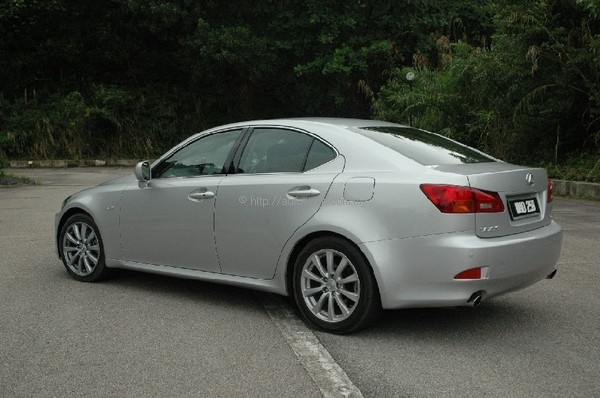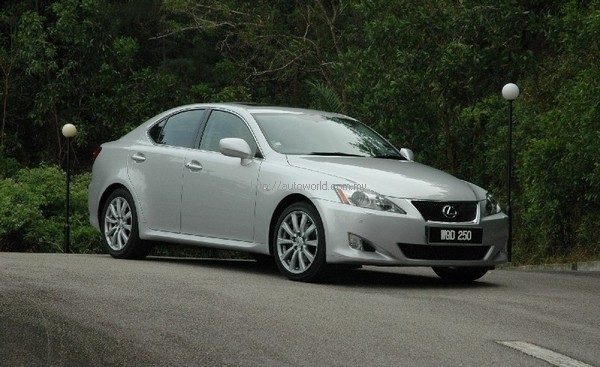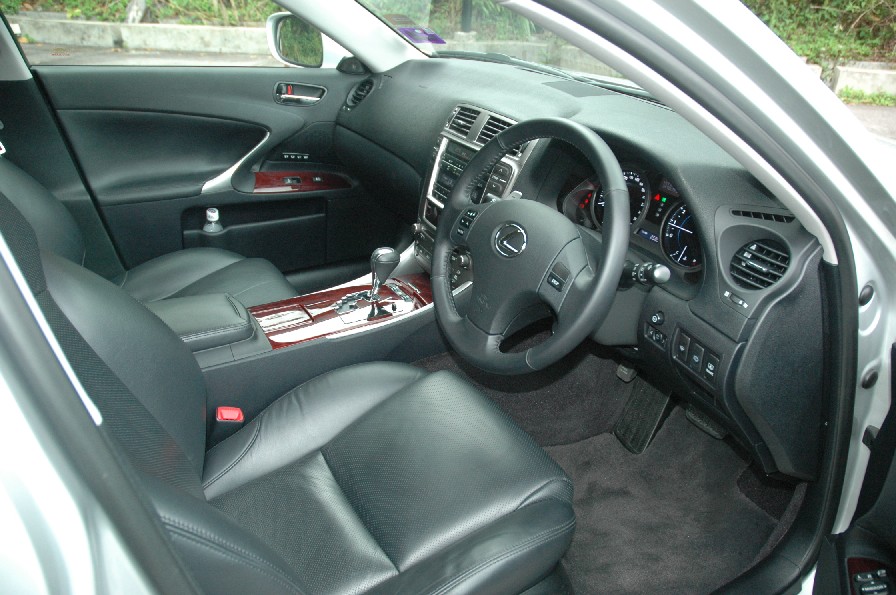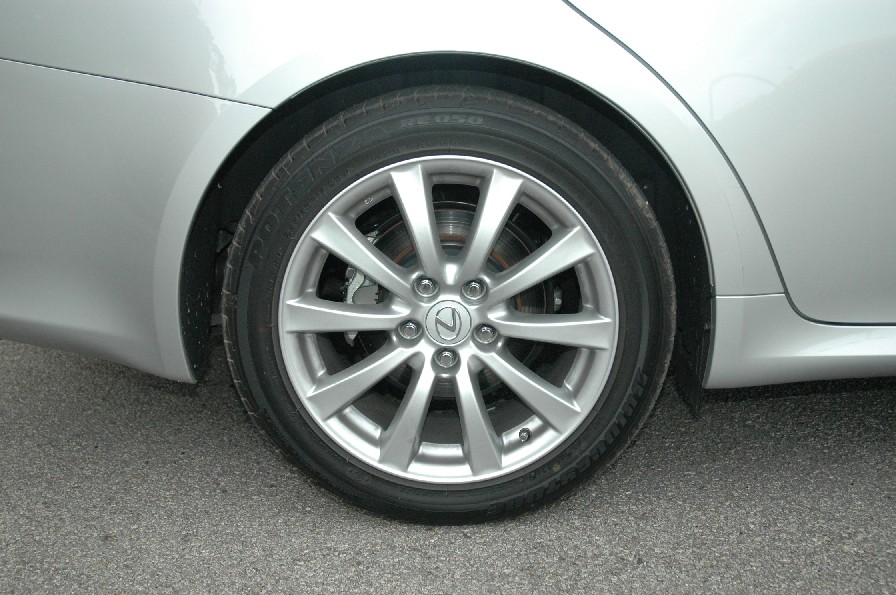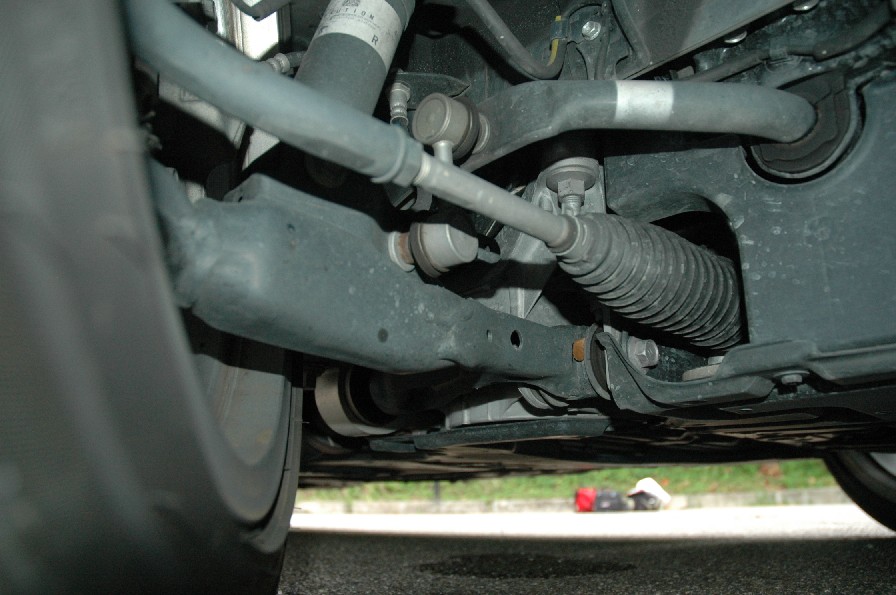LEXUS IS250 – Sporty & Fun To Drive
I have driven most of the Lexus models, and the IS250, the latest offering by Lexus Malaysia, is in my personal opinion, the most enjoyable of the lot. The LS460 flagship model is a little too stately for me, and although the GS300 is more contemporary, I still find it too austere. The IS 250, successor to the IS200, is more ‘me’.
They only had one car for media testing, they could only spare it for one day, which is rather short for a test; I knew that the only way to get a good enough feel for it was to take it out for an extensive drive, so it was off to Kuantan and back, a journey of more than 650 kilometres.
So it came to be that I went with my colleague to the Lexus Centre in Mutiara Damansara to do a swap, a Corolla for the Lexus (a worthwhile trade?) and straight on to Bentong, but with a detour through the old winding road at Bukit Tinggi, to get a feel of the handling of the IS250.
The IS 250 is just the right size for some spirited driving, and I found it to be extremely nimble through the twisties that follow the little river from Bukit Tinggi to Bentong, for a distance of 30 or so kilometres. The car is so ‘chuckable’; with the right weight transfer technique, you can get it to do just about anything around those bends, and the response to steering is nothing less than pin-point accurate. The fact that the IS 250 comes with rear wheel drive goes down very well with me, being of the ‘old school’.
The six-speed auto comes with a ‘sports’ mode, invoked by pushing the gear lever to the right, and after that, you use the paddle shifts located behind the steering wheel, pulling on the right hand lever to shift up, and on the left to shift down. It can be quite fun, except that you cannot force a downshift if your speed exceeds what the transmission controller deems too fast. The same idiot-box will also downshift if you floor the pedal when in a high gear. I suppose they have got it figured out and are trying to make the car as easy to drive as possible, for Joe Average. The saving grace is that it will not shift up either, even if you are bouncing on the rev-limiter.
Through the corners, the 17-inch wheels with low profile tyres work well with the 4-wheel independent suspension to give the IS 250 almost flawless entries and exits, although the traction control warning light does blink every now and then as the car tries to tell you that you are exceeding the ‘safe’ limits of adhesion. I think that perhaps they set the threshold a mite on the low side so as to give the driver a warning as early as possible. Anyway, the actual traction control does not happen until much later.
Acceleration is crisp, and with the air-conditioner on, and two people in the car, I managed a best time of 7.88 seconds for the zero to one hundred km/h dash. Traffic was relatively light that day, but the occasional car on the highway meant that we had to slow down somewhat, just in case, and we managed a top speed of 220 km/h. Straight line stability is excellent, and the IS 250 will cruise comfortably at anything between 160 to 180 km/h. At 160 km/hr, it feels like it is doing 100 km/h, it being so quiet and steady. It will build up speed quickly to 200, but after that it takes a little while to get up to 220 after which it is quite reluctant to go up any further. Still, it is a great car to drive.
The suspension is tuned to be on the firm side of comfortable. This gives the IS 250 a firm but comfortable ride, and good handling. However, at speeds above 200 km/h, the discerning driver will feel that it may be a little on the soft side, as the car starts to be somewhat agitated, and more susceptible to gusts of wind. However, and fortunately, most of the people likely to buy one of these cars would probably never exceed this speed, so it will not be a major issue. Anyway, there are always suspension tuning kits available on the market if you are very particular, bearing in mind of course, that a hard suspension good for high speeds means that ride quality at low speeds suffers.
The brakes are adequate, and stopping power is good. However, if pushed hard, they do heat up after a while, and on the Bentong stretch, they started to fade, but only very slightly, after about ten minutes of hard driving. Just slowing down a little for a couple of bends, and using the brakes a little less got them cooled down and they were as good as new again.
As far as fuel consumption goes, we got 388.5 kilometres from one refill of RM101.63. This works out to 27 sen a kilometre, but this was with very high speed driving and lots of high engine revolutions. For ‘normal’ driving, my experience tells me that you should get about 25 to 30 percent better fuel consumption.
In terms of looks, the IS 250 is very continental in design, to the extent that you might be forgiven for thinking it is one of the popular German makes, as the lines and overall profile seem very close. Of course, up close and personal, the IS 250 has its own character, and there is no mistaking the Lexus badge stuck on the front grille and on the bootlid.
Inside, the trim is very classy, and luxurious. Lexus has always designed its cars to be top of the line insofar as interior trim is concerned, and you will have no complaints as far as the IS 250 is concerned. Both the front seats are electrically controlled, with memory. The sound system is superb, and there is virtually no wind noise. The only beef I would have is the foot-operated parking brake; a regular handbrake mounted in the area between the two front seats would have been preferred. Not only would this allow one to play around with the handbrake, but it would also free some space in the foot-well for people with big feet.
The analog meters have an additional and interesting feature. The speedometer and tachometer each have a ring of lights in them. The lights in the speedometer turn from blue to orange at 120 km/hr, and red at 200 km/h. In the tachometer, they turn to orange at 4,000 rpm, and red at 6,500 rpm. Just a gimmick, but something new, nevertheless.
On the whole, I like the IS 250. I like it for its size, which is just right, not too big, and not too small, its agility, and the ease with which I can throw it around even the tightest of corners, and finally, the good compromise between good handling and a comfortable ride.
At the asking price of RM305k, it is going to give the European makes a run for their money. The Lexus IS250 is not only competitively priced, but offers something different to the customer.




